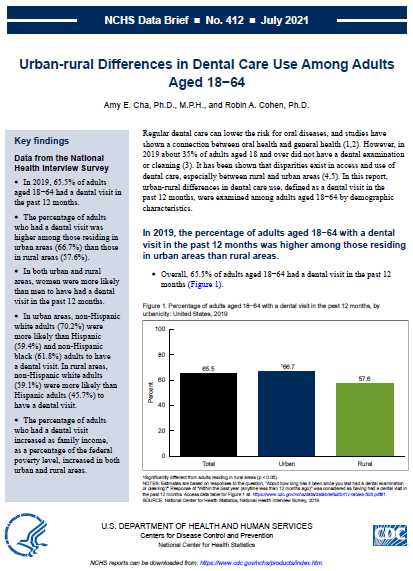Urban-rural Differences in Dental Care Use Among Adults Aged 18−64
Posted on by Questions for Amy Cha, Health Statistician and Lead Author of “Urban-rural Differences in Dental Care Use Among Adults Aged 18−64.”
Questions for Amy Cha, Health Statistician and Lead Author of “Urban-rural Differences in Dental Care Use Among Adults Aged 18−64.”
Q: How does the data vary by sex, race, and income level?
AC: In both urban and rural areas, the percentage of adults aged 18-64 who had a dental visit in the past 12 months was higher among women and non-Hispanic white adults than men and Hispanic adults. Also, the percentage of adults who had a dental visit increased as family income increased in both urban and rural areas.
Q: Why did you decide to look at dental visits by urbanicity?
AC: Studies have shown that disparities exist in access to and use of dental care, especially between rural and urban areas. So, we decided to look at dental visits by urbanicity.
Q: Were you surprised by any of the findings in this report?
AC: We were surprised that the percentage of adults aged 18-64 with a dental visit in the past 12 months was significantly different between those residing in urban and rural areas.
Q: What is the take home message in this report?
AC: This report examined urban-rural differences in dental care use among adults aged 18-64, and its variation by sex, race and ethnicity, and family income as a percentage of the federal poverty level.
Q: Anything else that you would like share from the report?
AC: It has been reported that persons living in rural areas were less likely to have a preventive dental visit, but more likely to seek emergency dental treatment than those residing in urban areas. As shown in this report, the lower percentage of dental care utilization in rural areas may be attributed to the lower density of dental care providers in these areas.
Posted on by

